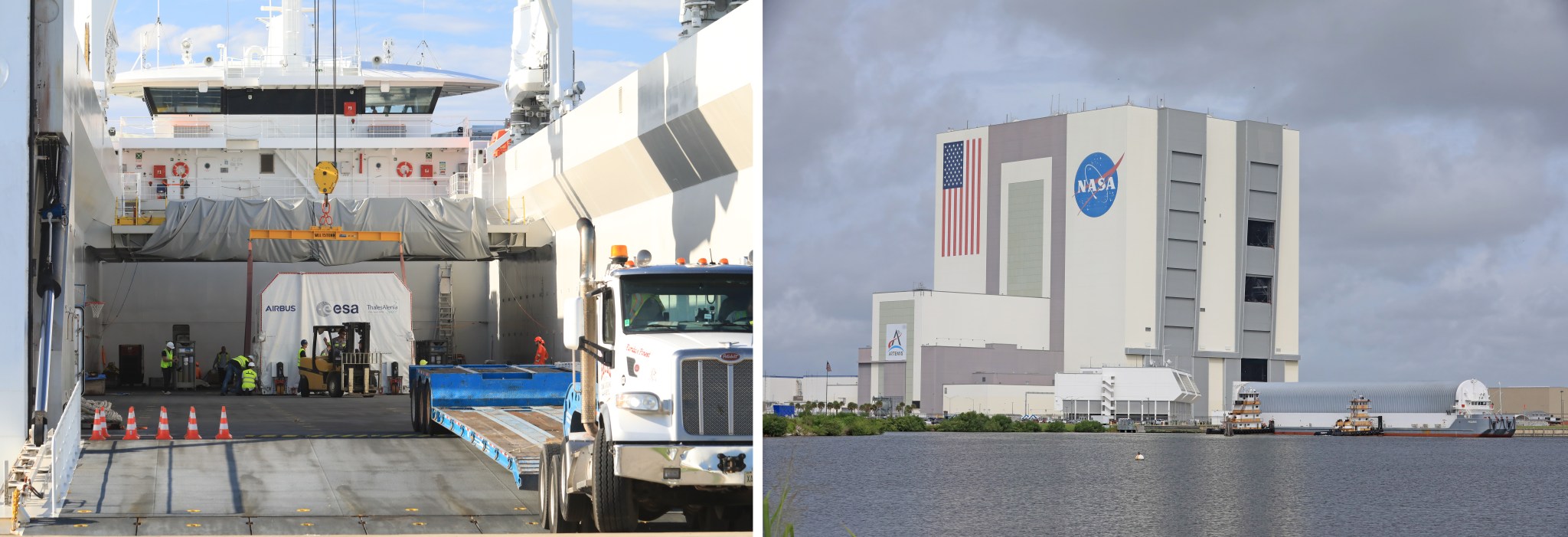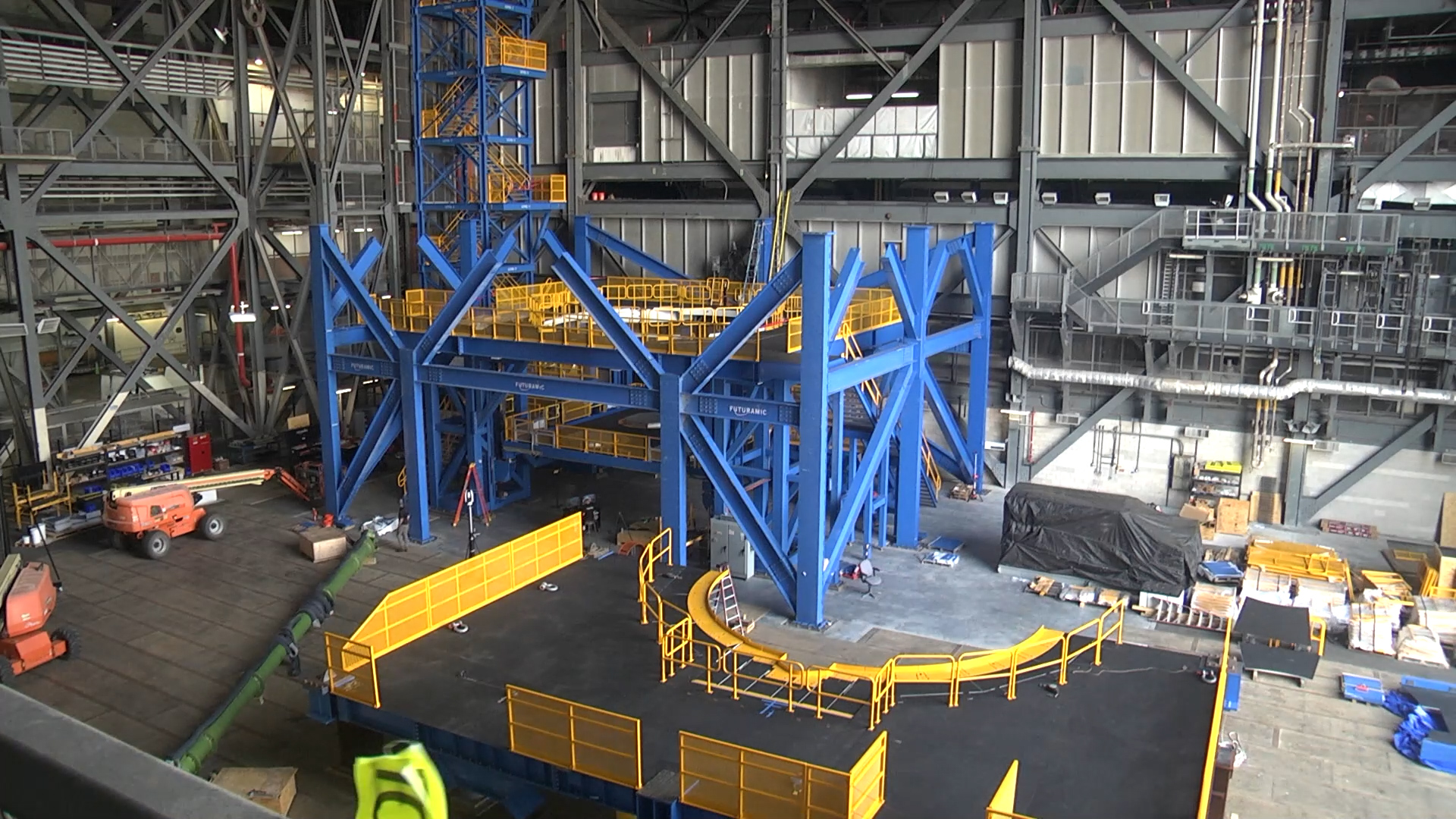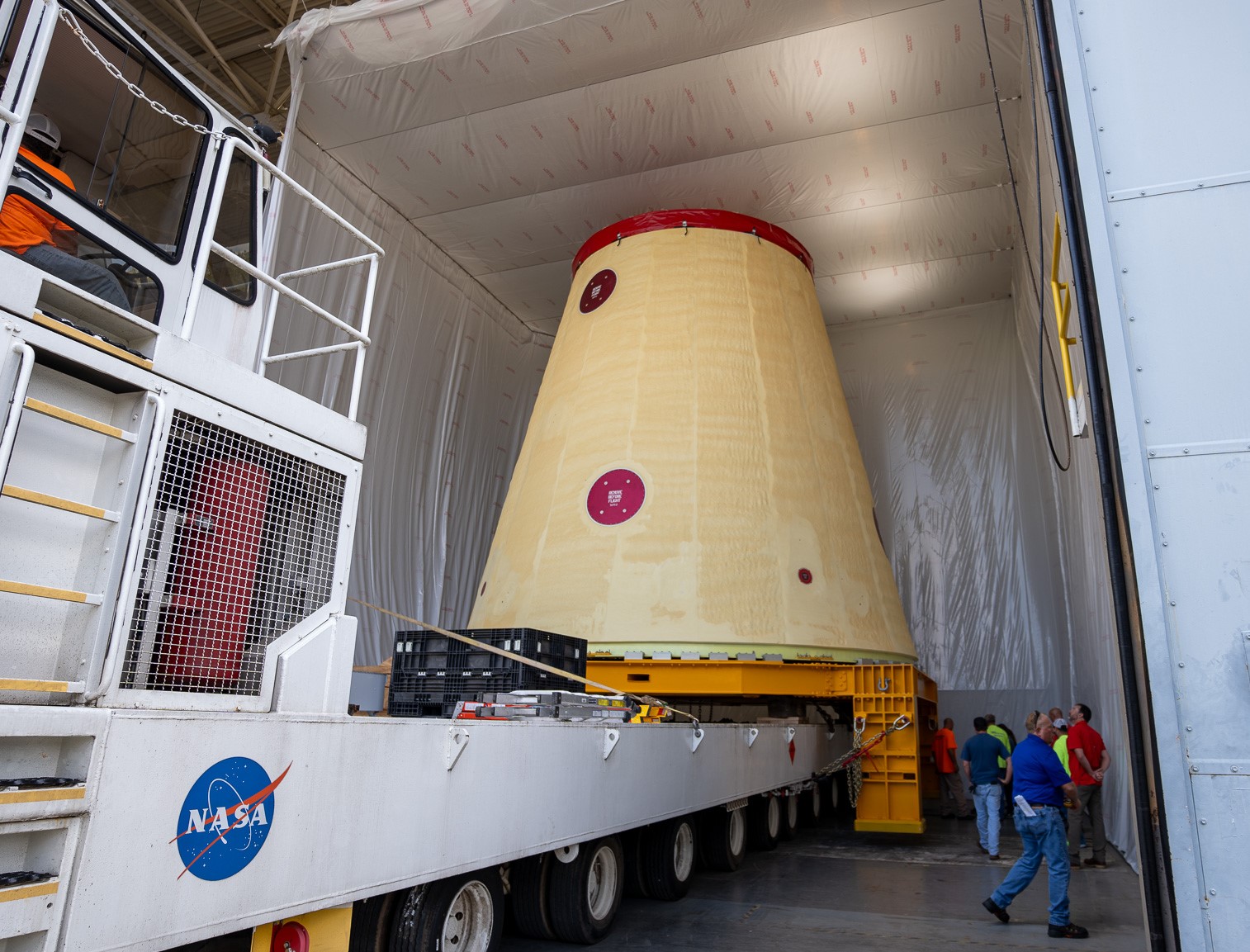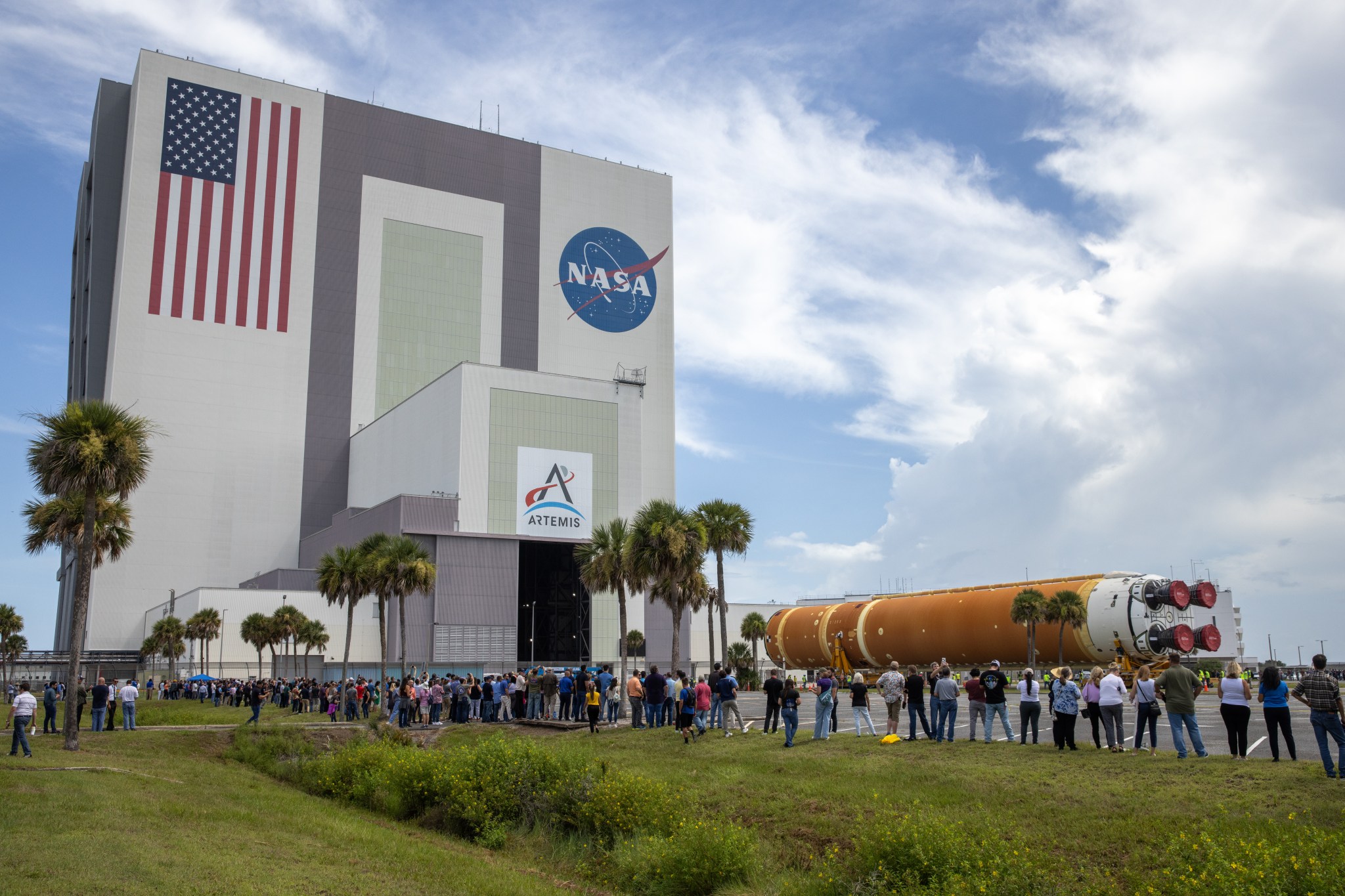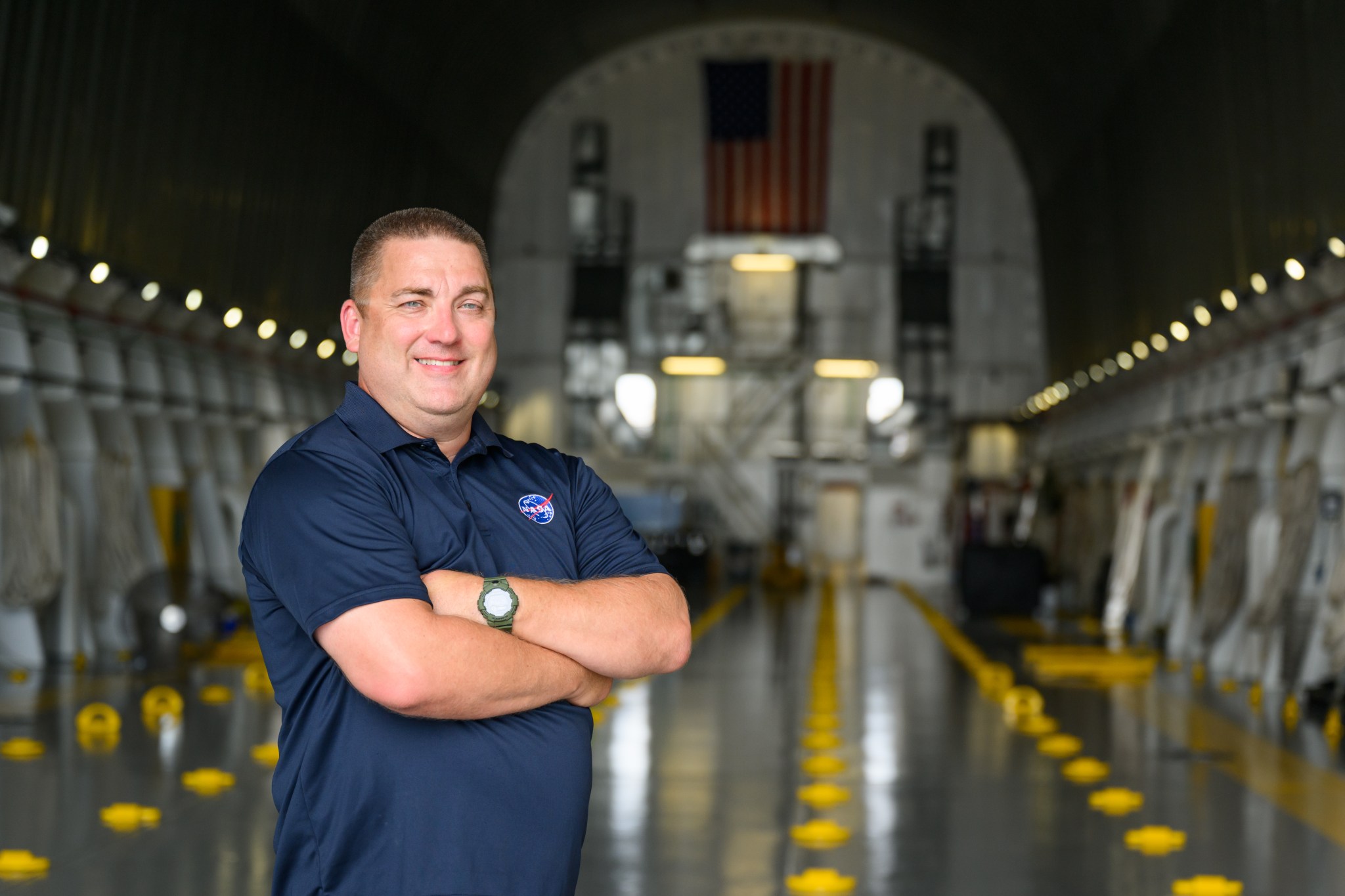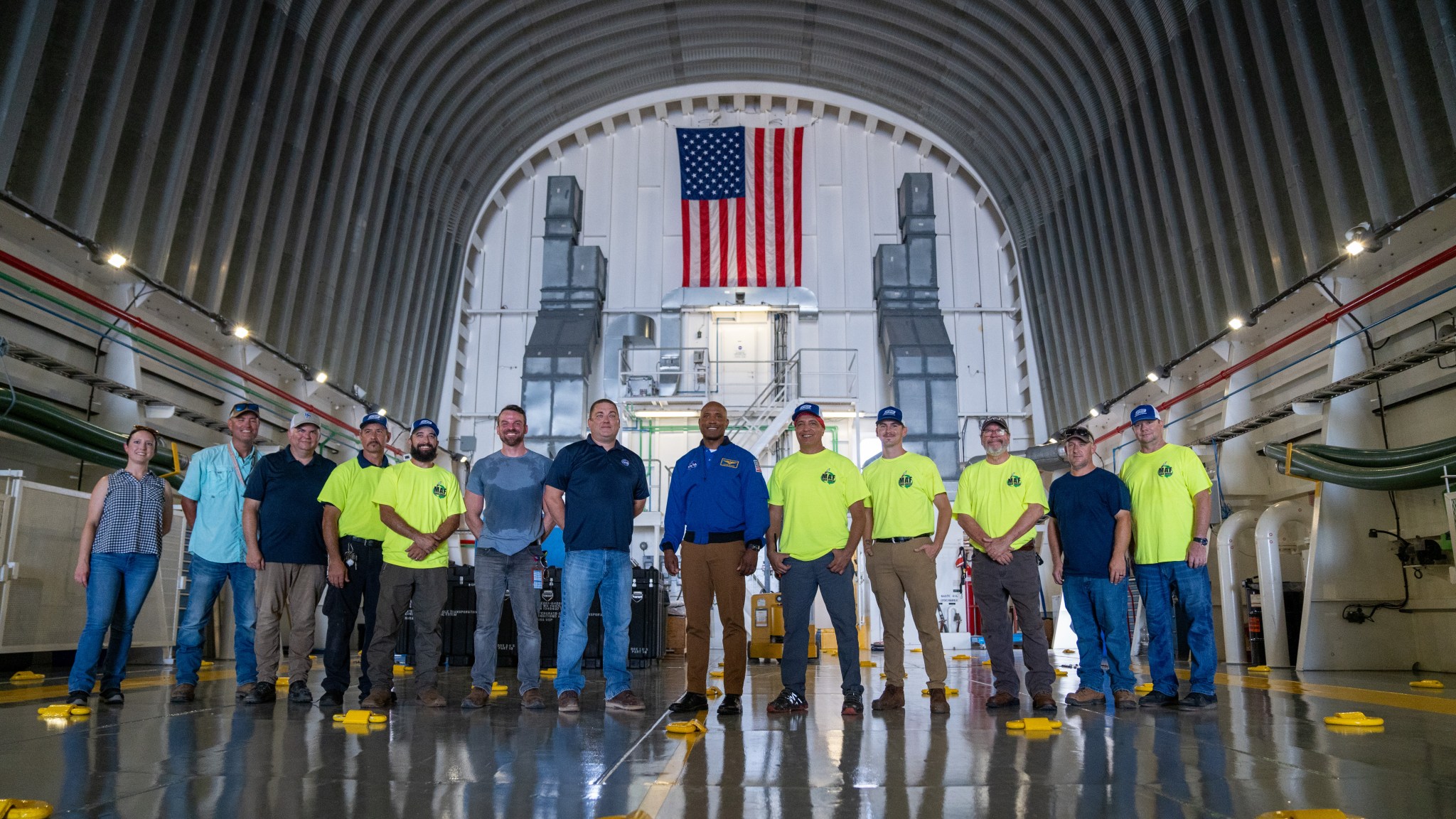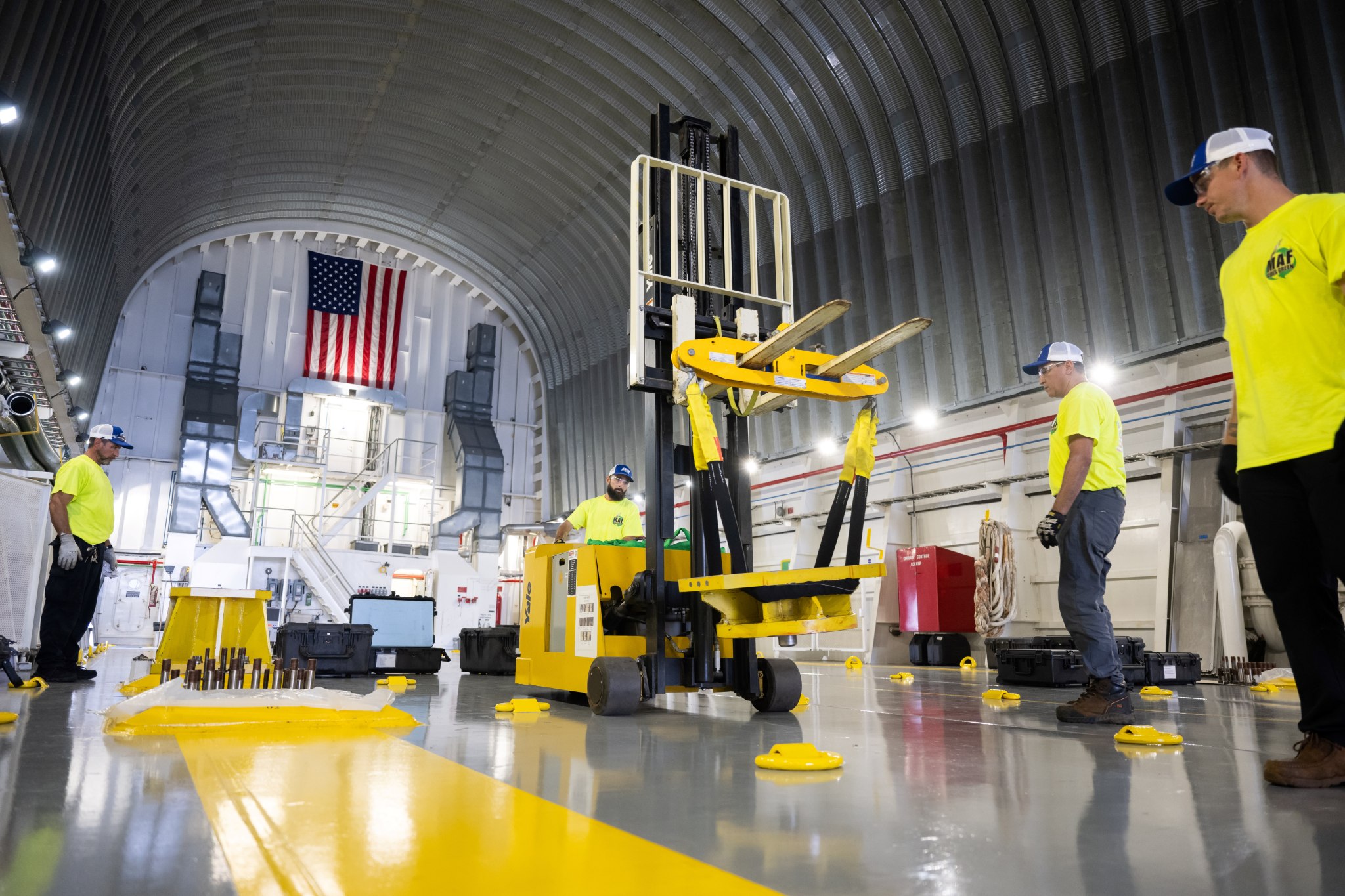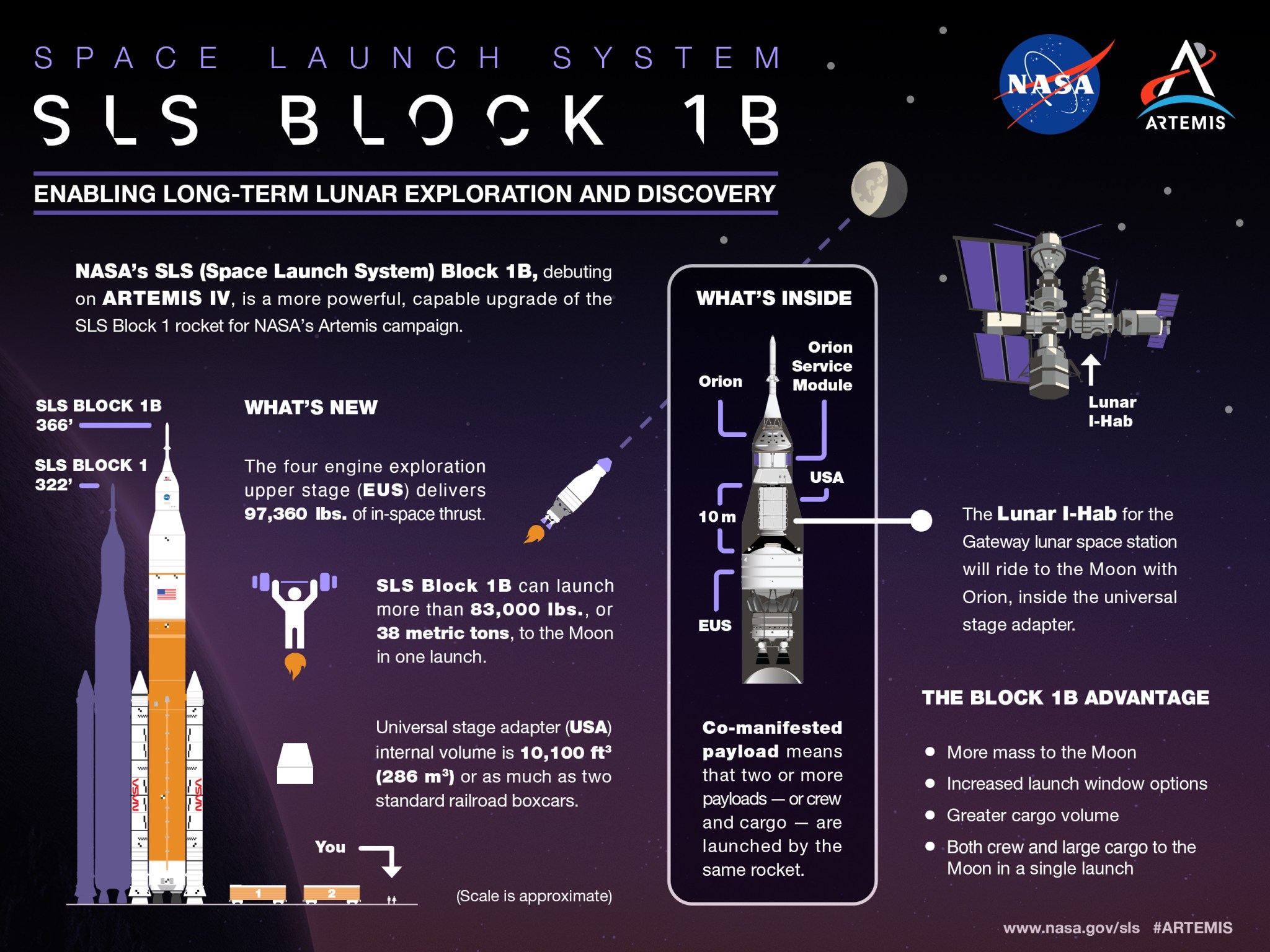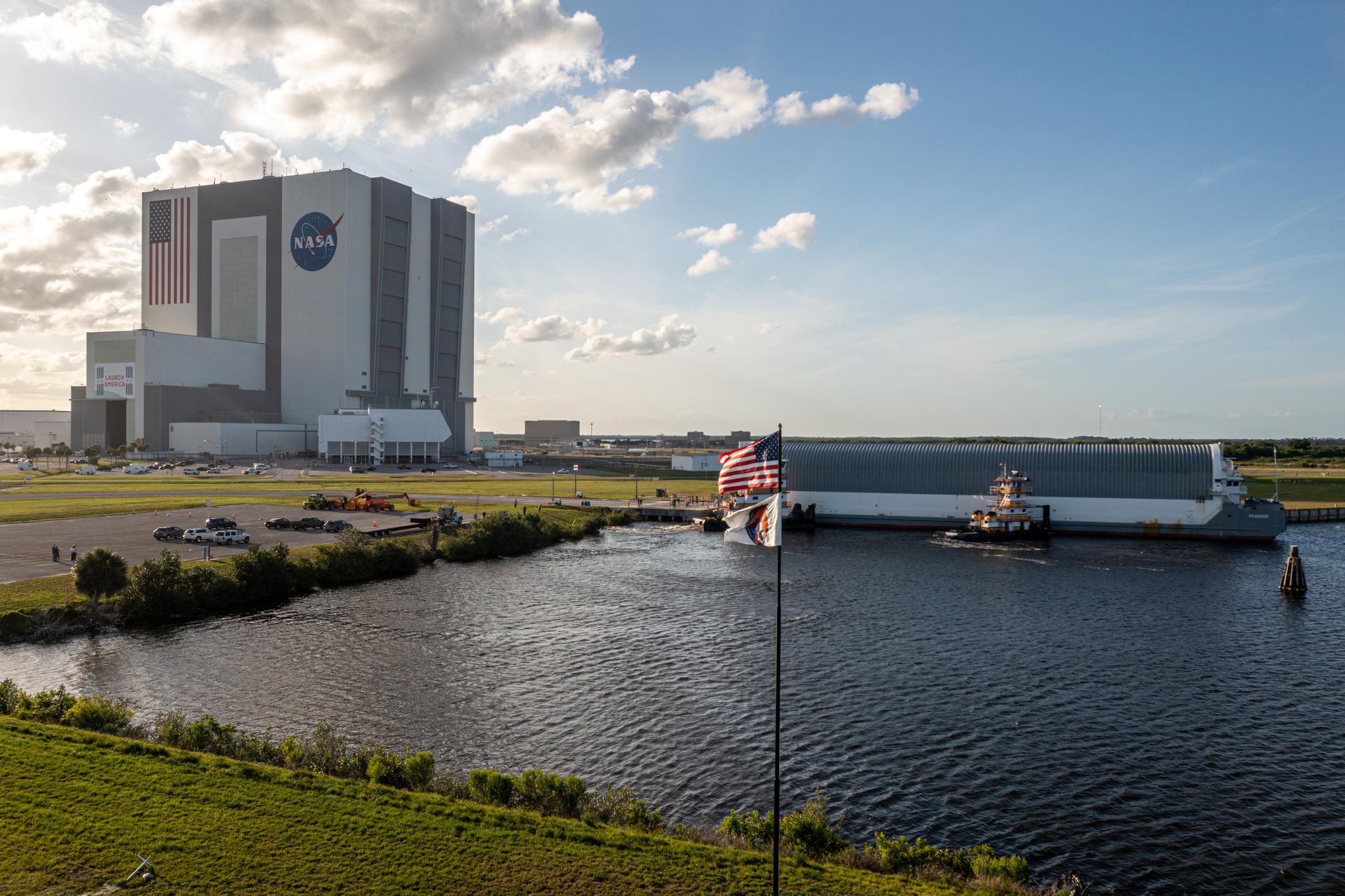Lane Polak is a technical writer for NASA’s SLS (Space Launch System), where he is responsible for creating content that raises public awareness of NASA and specifically SLS. NASA/Samuel Lott Growing up, Lane Polak didn’t have much interest in space. Instead, he was busy writing stories, doodling, or riding his skateboard. He later dreamed of becoming an author but also considered stepping into the arena as an American Gladiator. After earning a degree in communications with a minor in English from the University of Alabama in Huntsville, Polak chose to…
Read MoreTag: Space Launch System (SLS)
New Hardware for Future Artemis Moon Missions Arrive at NASA Kennedy
On the left, the Canopee transport carrier containing the European Service Module for NASA’s Artemis III mission arrives at Port Canaveral in Florida, on Tuesday, Sept. 3, 2024, before completing the last leg of its journey to the agency’s Kennedy Space Center’s Neil A. Armstrong Operations and Checkout via truck. On the right, NASA’s Pegasus barge, carrying several pieces of hardware for Artemis II, III, and IV arrives at NASA Kennedy’s Launch Complex 39 turn basin wharf on Thursday, Sept. 5, 2024. Credit: NASA From across the Atlantic Ocean and…
Read MoreNASA, Boeing Optimizing Vehicle Assembly Building High Bay for Future SLS Stage Production
NASA is preparing space at the agency’s Kennedy Space Center in Florida for upcoming assembly activities of the SLS (Space Launch System) rocket core stage for future Artemis missions, beginning with Artemis III. Teams are currently outfitting the assembly building’s High Bay 2 for future vertical assembly of the rocket stage that will help power NASA’s Artemis campaign to the Moon. During Apollo, High Bay 2, one of four high bays inside the Vehicle Assembly Building, was used to stack the Saturn V rocket. During the Space Shuttle Program, the…
Read MoreNASA Invites Media to Watch Artemis II Rocket Adapter Roll Out
Crews are preparing to move a key adapter for NASA’s Space Launch System rocket out of Marshall Space Flight Center’s Building 4708 to the agency’s Pegasus barge. The cone-shaped launch vehicle stage adapter connects the rocket’s core stage to the upper stage and helps protect the upper stage’s engine that will help propel the Artemis II mission around the Moon. Credits: Sam Lott/NASA To mark progress toward the first crewed flight test around the Moon in more than 50 years for the benefit of humanity, NASA will welcome media Wednesday,…
Read MoreArtemis II Core Stage Arrives at Kennedy
NASA/Kim Shiflett Teams transport NASA’s SLS (Space Launch System) core stage into the Vehicle Assembly Building at the agency’s Kennedy Space Center in Florida on July 24, 2024. Tugboats and towing vessels moved the Pegasus barge and 212-foot-long core stage 900-miles to the Florida spaceport from NASA’s Michoud Assembly Facility in New Orleans, where it was manufactured and assembled. In the coming months, teams will integrate the rocket core stage atop the mobile launcher with the additional Artemis II flight hardware, including the twin solid rocket boosters, launch vehicle stage adapter, and…
Read MoreI am Artemis: John Campbell
John Campbell, a logistics engineer at NASA’s Marshall Space Flight Center, stands on NASA’s Pegasus barge July 15. NASA How do you move NASA’s SLS (Space Launch System) rocket’s massive 212-foot-long core stage across the country? You do it with a 300-foot-long barge. However, NASA’s Pegasus barge isn’t just any barge. It’s a vessel with a history, and John Campbell, a logistics engineer for the agency based at NASA’s Marshall Space Flight Center in Huntsville, Alabama, is one of the few people who get to be a part of its…
Read MoreFrom One Crew to Another: Artemis II Astronauts Meet NASA Barge Crew
Members of the Artemis II crew met with the crew of NASA’s Pegasus barge prior to their departure to deliver the core stage of NASA’s SLS (Space Launch System) rocket to the Space Coast. NASA astronaut and pilot of the Artemis II mission Victor Glover met the crew July 15. From left to right: Ashley Marlar, Jamie Crews, Nick Owen, Jeffery Whitehead, Scott Ledet, Jason Dickerson, John Campbell, NASA astronaut Victor Glover, Farid Sayah, Kelton Hutchinson, Terry Fitzgerald, Bryan Jones, and Joe Robinson. NASA/Brandon Hancock NASA astronaut Reid Wiseman, commander,…
Read MoreNASA Barge Preparations Underway for Artemis II Rocket Stage Delivery
NASA/Eric Bordelon Team members are installing pedestals aboard NASA’s Pegasus barge to hold and secure the massive core stage of NASA’s SLS (Space Launch System) rocket, indicating NASA barge crews are nearly ready for its first delivery to support the Artemis II test flight around the Moon. The barge will ferry the core stage on a 900-mile journey from the agency’s Michoud Assembly Facility in New Orleans to its Kennedy Space Center in Florida. The Pegasus crew began installing the pedestals July 10.The barge, which previously was used to ferry…
Read MoreNASA’s SLS Rocket: Block 1 vs. Block 1B Configuration
NASA/Kevin O’Brien NASA’s SLS (Space Launch System) rocket in the Block 1B cargo configuration will launch for the first time beginning with Artemis IV. This upgraded and more powerful SLS rocket will enable SLS to send over 38 metric tons (83,700 lbs.) to the Moon, including NASA’s Orion spacecraft and its crew, along with heavy payloads for more ambitious missions to deep space. While every SLS rocket retains the core stage, booster, and RS-25 engine designs, the Block 1B features a more powerful exploration upper stage with four RL10 engines…
Read MoreNASA Invites Media to See Artemis II Moon Rocket Elements at Kennedy
NASA’s Pegasus barge delivers the SLS (Space Launch System) rocket’s core stage for the 2022 Artemis I mission to the turn basin at Kennedy Space Center in Florida in April 2021. Credits: NASA/Michael Downs Media are invited in late July to NASA’s Kennedy Space Center in Florida to see progress on the agency’s SLS (Space Launch System) Moon rocket as preparations continue for the Artemis II test flight around the Moon. Participants joining the multi-day events will see the arrival and unloading of the 212-foot-tall SLS core stage at the…
Read More
